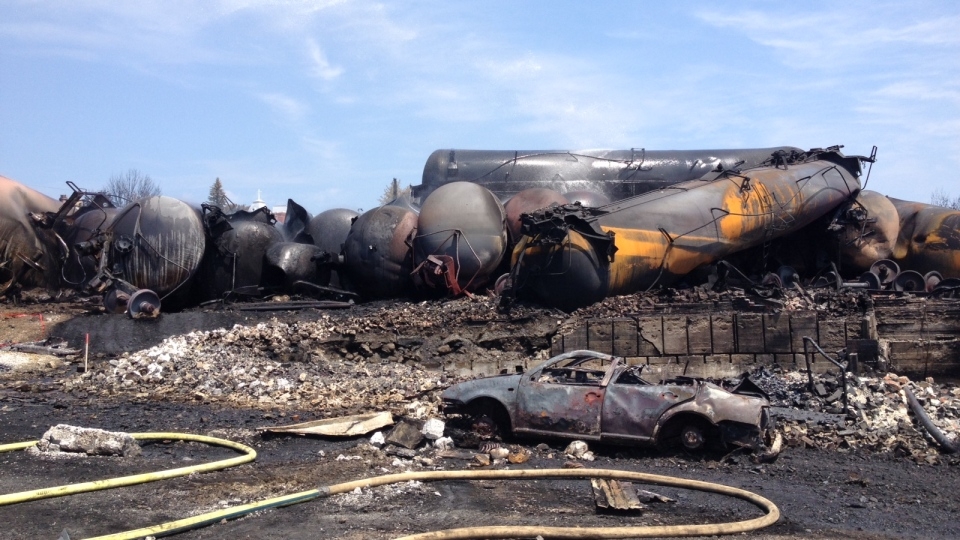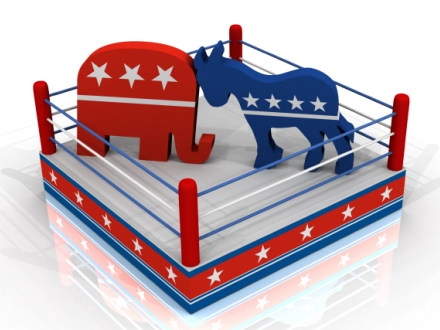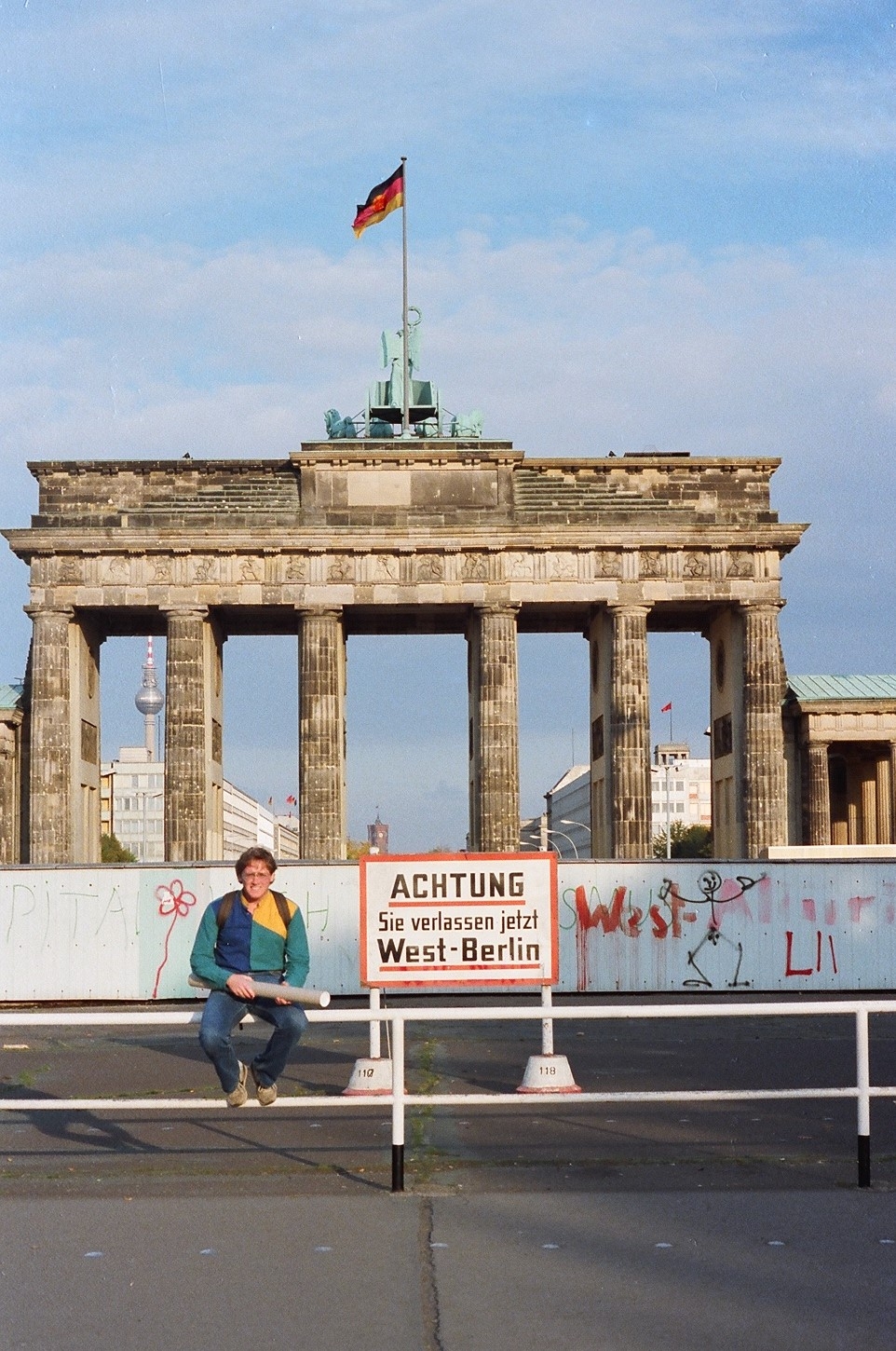
Berlin – before the Wall fell
by Dan McCarthy
November 9, 2019 marks the 30th anniversary of the fall of the Berlin Wall; an epochal event of the 20th century that presaged the dissolution of the Soviet Union two years later. Political philosopher Francis Fukuyama foretold this evolution earlier in 1989, in an essay “The End of History”; “not just the passing of a particular period of post-war history, but the end of history as such . . . and the universalization of Western liberal democracy as the final form of human government”. But history rarely follows a straight path; walls are going up around the globe today, and liberal democracy is on the run in many western nations. But in October 1984, the Wall was the barrier that encompassed the Allied section of Berlin.
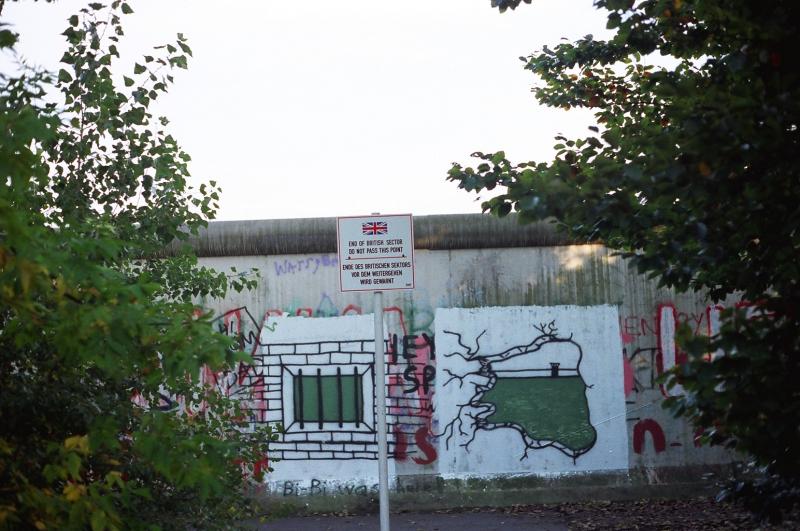
There was a late October chill in the air as we half-ran through deserted streets in the former East Berlin, and crossed the Spree River. Mist rolled off the water, and the chill seemed to heighten as the eerie snow-white wall came into view at the end of the street, fully illuminated with the one-hundred metre wide ‘death strip’ in the foreground. Whereas the western side of the wall was covered with graffiti, by part, political or profane, the ‘death strip’ on the eastern side precluded any such desecration. A truck filled with soldiers rattled by us. Thirty-five years later, this remains a vivid memory.
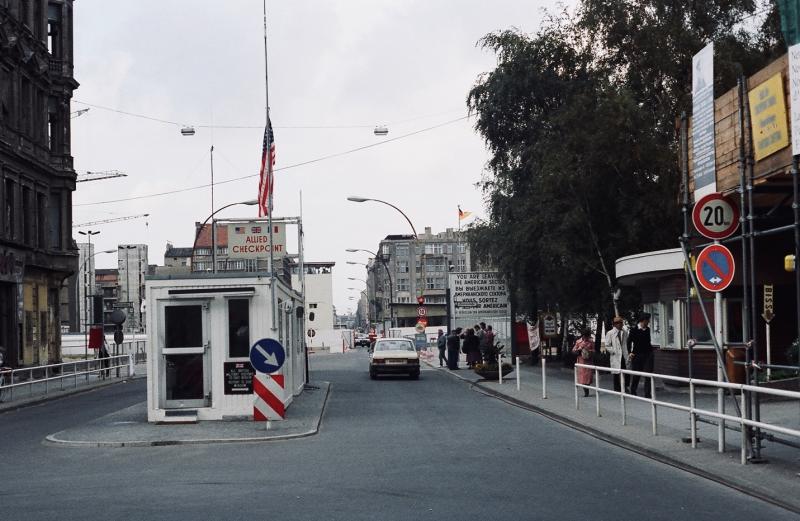
Fourteen hours earlier, we had crossed through the iconic Cold War landmark, Checkpoint Charlie, and entered a totally foreign East Berlin, capital of the former communist-ruled German Democratic Republic or GDR. It was October 1984, and a world away from the Neuschwanstein Castle that inspired Walt Disney, Munich’s Oktoberfest, and the medieval towns along the Romantic Road.
We boarded the overnight train in Frankfurt and settled in for an 8-hour journey, punctuated by multiple station stops and passport checks. East German border guards came onto the train at the frontier, and the trip was delayed as the exterior of the train was examined for any ‘hitchhikers’. About 6 am, the train screeched to a stop, and we could see a barrier stretching off into the distance. Uniformed guards and soldiers appeared on either side of the train cars, and ran dogs along the undercarriage. The train then proceeded through a gap in the barrier; next stop was the central core of West Berlin.
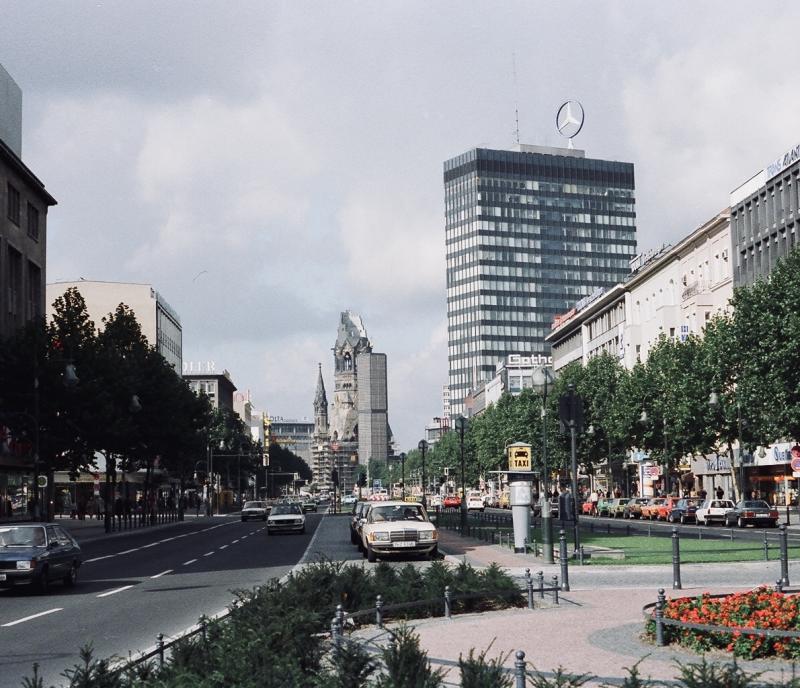
The bars in the train station were hopping and emerging to a grey steel sky, you could immediately feel the vibrancy of the city. We strolled along Kurfurstendamn – the Ku’damn – pre-war Berlin’s premier boulevard. I photographed several Porsche cars until I realized they were as ubiquitous as Cadillacs back home. In 1984, few Canadians drove a Porsche! Any resemblance with Manhattan’s Fifth Avenue ended when we saw the scarred ruin of the Kaiser Wilhelm Gedarchtriskirche (Memorial Church). The blackened stump of the main steeple just blocks from the gleaming Mercedes Benz building was jarring. 1943 air raids destroyed the church and post-war, Berliners preserved the ruins as a memorial against war, and as an enduring monument to the WWII destruction of their city.
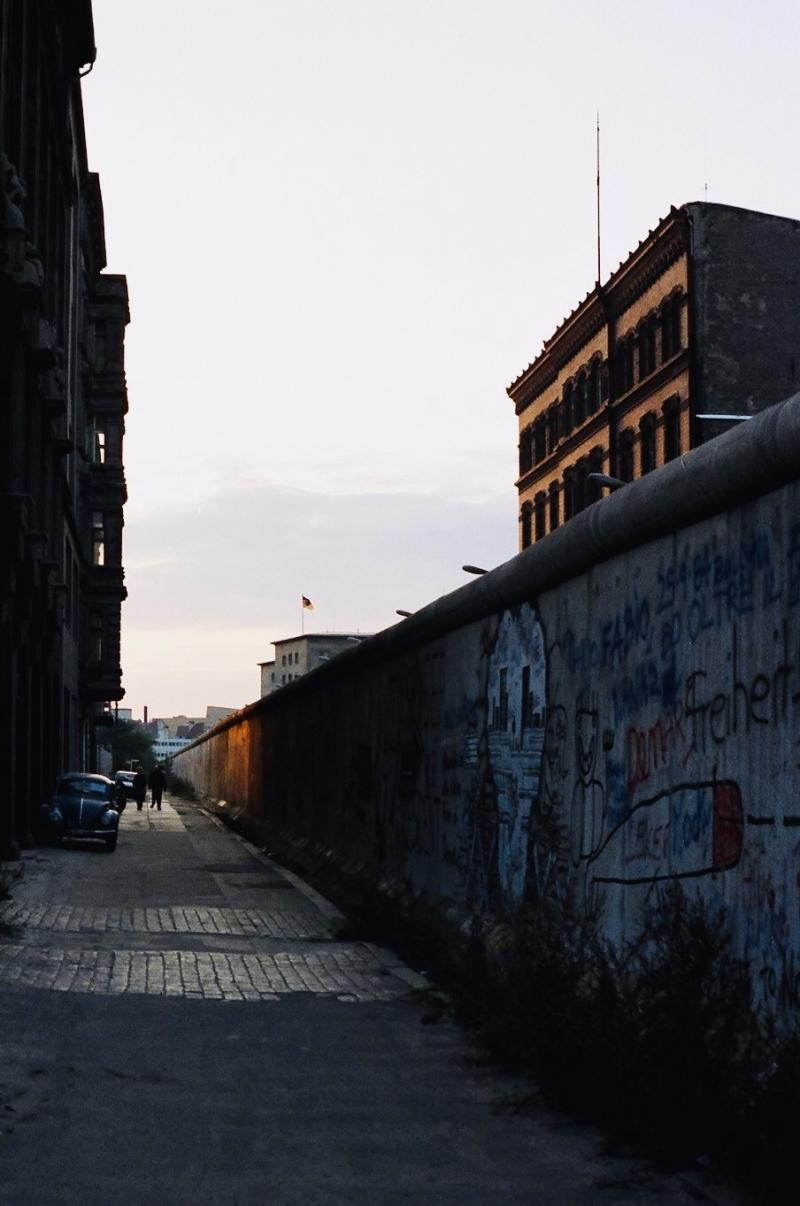
Crossing the Landwehr Canal, we entered the famous Tiergarten. A Soviet War Memorial in remembrance of the 80,000 Red Army soldiers who died in the Battle of Berlin in April and May 1945 displays a tank and artillery pieces. Built later that year, the monument sits in what became the British sector of Berlin. Notwithstanding Soviet conduct after the victory, respect for the Red Army sacrifice in the war was such that the British Army guarded the monument through the Cold War.
Nearby sits another then-blackened testament to the brutality of the Nazi era and its fiery end, the Reichstag. Presently restored as seat of the Bundestag (Parliament) of a united Germany, it was burned by the Nazis in 1933, who used the fire as a pretext to persecute their political enemies, primarily communists. The building was the site of one of the last engagements with Soviet troops in May 1945. A citizens’ memorial to East Germans killed crossing the barrier adorned the Wall behind the Reichstag; at least 80 people died fleeing East Berlin between 1961 and 1989.
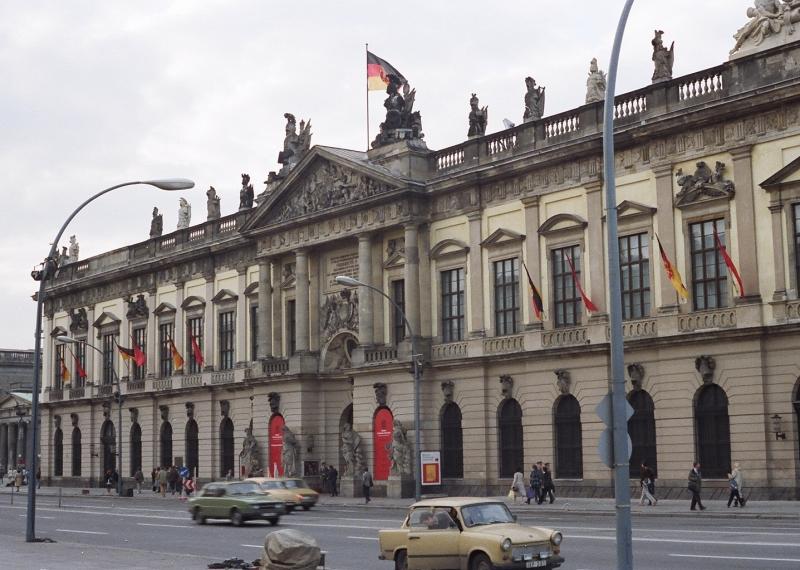
The following day, after purchasing a visa, and exchanging 25 West German Deutsche Marks for 25 East German Marks, we crossed into East Berlin. Western literature was officially banned at the border, and in a small act of rebellion, I had brought along a copy of John Le Carré’s Cold War novel, The Spy Who Came In From the Cold, and a Maclean’s magazine with Pope John Paul II on the cover. These attracted little attention, and we passed through with minimal questioning; save one caveat, return to this checkpoint and leave the East by midnight.
The difference was palpable and immediate. Broad avenues seemed under-populated, smog belching Trabants replaced Mercedes and Volkswagens, and GDR flags in much greater prominence than its West German counterpart. The streets were spotless but sterile and officious. Irony was lost on the goose-stepping honour guards parading outside the Monument to the Victims of Fascism and Militarism on Unter den Linden, and the Museum of German History provided an alternative version from the Soviet perspective.
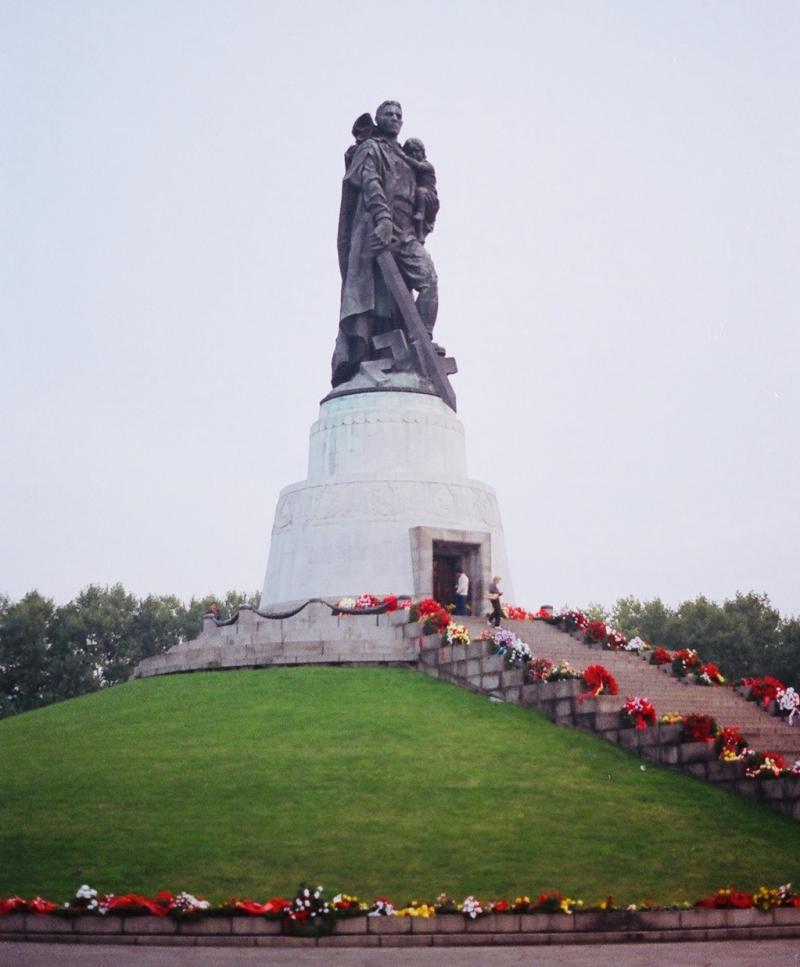 ?
?An S-Bahn train took us south to Treptow Park, the site of a larger Soviet War Memorial, and the final resting place of 7,000 who died in the Battle of Berlin. The statuary is impressive, expressive and sombre; the entrance promenade is flanked by two bronzed kneeling soldiers aside stylized Soviet flags clad in red granite taken from the ruins of Hitler’s Chancellery building. A massive statue of a Soviet soldier with sword drawn, holding a child in the other arm, astride a broken swastika dominates the Memorial.
It was late in the day, and the commuter train was full. I leaned over to my travelling companion and whispered, “don’t look around but everyone is staring at us”. Dressed in Levis and a jean jacket with Adidas sneakers and backpack slung over our shoulders, I’d never felt so conspicuous. It really hit home how fortunate we were: we could leave, go back to the West, and they were trapped behind the Wall.
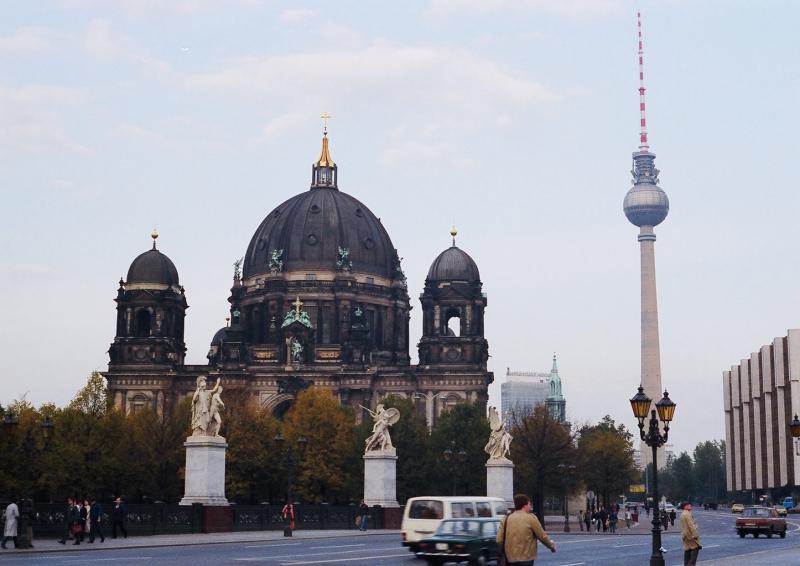
We made our way back to the city centre and the plaza surrounding the 368 metre television tower. The centrepiece of a ‘prosperous’ East Berlin, the tower opened in 1969. An engineering anomaly though resulted in what West Berliners termed the ‘Pope’s Revenge’; the sun reflected the shape of a crucifix on the ball of the tower, anathema in the officially atheistic state. Seating in the tower’s revolving restaurant was communal; we squeezed into two vacant seats, and in the absence of menus, noted that our tablemates seemed to all have the same meal – a dish of chicken legs with Black Forest cake. English was not spoken in this restaurant, so we pointed to our seatmate’s plate, held up two fingers and ordered a couple of biers.
Shortly before midnight, we crossed through Checkpoint Charlie to familiarity and normality. Berlin 1984 was as much mood and a frame of mind as a physical place. I’m told that it remains one of the globe’s most fascinating and exciting cities, and I regret not returning in the past 35 years. But I feel fortunate to have experienced it in a small way during those anxious Cold War years; as Bruce Cockburn described it in his 1985 song Berlin Tonight, “on the front line of the last gasp”.

